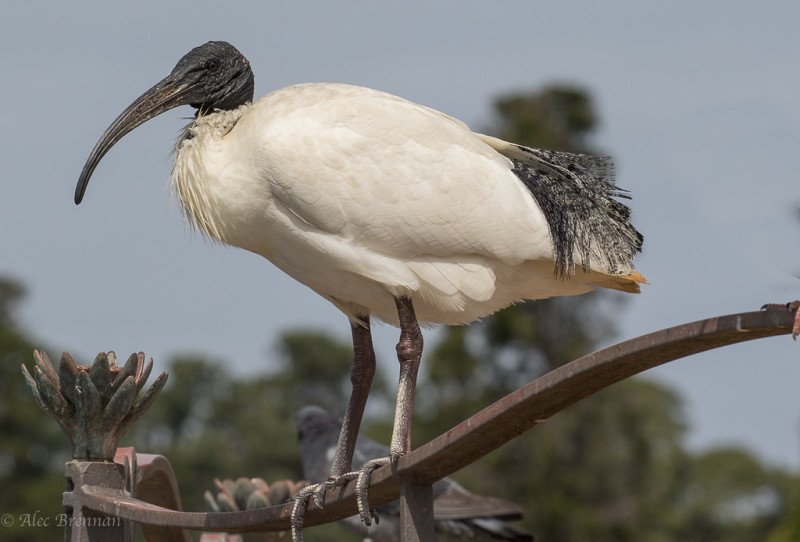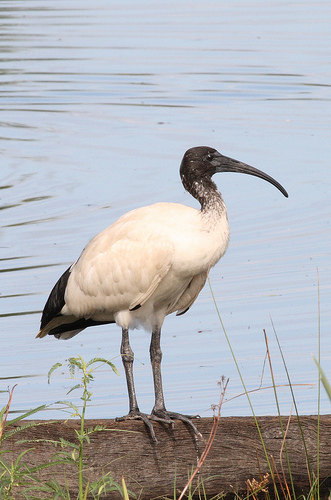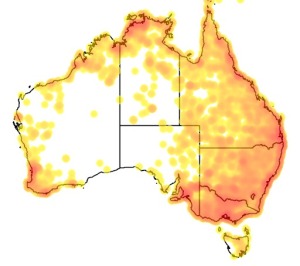Colours
Distinguishing features
It has a bald black head and neck and a long black downcurved beak, measuring over 16 cm in the male, but less in the female. There is some sexual dimorphism in size, as the male is slightly heavier.
The body plumage is white although it may become brown-stained. Inner secondary plumes are displayed as lacy black 'tail' feathers. The upper tail becomes yellow when the bird is breeding. The legs and feet are dark and red skin is visible on the underside of the wing.
Immature birds have shorter bills. The head and neck are feathered in juveniles.
It usually gives off a foul stench. This smell is not described as rotten, but an odd smell that is rather unpleasant and distinct. (Wikipedia)
Size
- From 65 cm to 75 cm (Length of specimen)
Wingspan
- Wingspan data is not yet available.
Synonyms
Similar taxa
Distribution
Distribution and habitat preferences
It is widespread in eastern, northern and southwestern Australia. It occurs in marshy wetlands, often near open grasslands and has become common in Australian east-coast city parks and rubbish dumps in the urban areas of Wollongong, Sydney, Perth, the Gold Coast, Brisbane and Townsville. (Wikipedia)
Diet
It feeds on various fish, frogs and other water creatures, and also insects and garbage. (Wikipedia)




